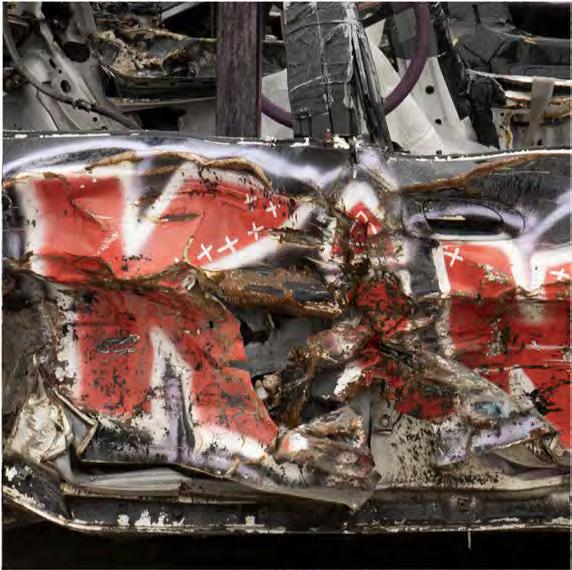
4 minute read
THE HISTORY
Demolition Derby entered the American lexicon when it was added to the MerriamWebster’s Collegiate Dictionary in 1953: A contest in which skilled drivers ram old cars into one another until only one car remains running.
As the art critic Peter Schjeldahl observed: No cars in the normal world can take hits at much more than five miles per hour without causing telephones to ring in insurance offices. Everything more violent enters obscure territory. In the derby, things happen to cars that a crash-test dummy never dreamed of.
Over the past nine decades, Demolition Derby has continued to appeal to audiences by challenging participants to defy common sense, disregard caution, and challenge the laws of physics. It intentionally celebrates the destruction of America’s 20th-century symbol of mobility and status—the automobile. The origins of the Demolition Derby can be traced back to the 1920s when racetrack owners recognized that the unplanned crashes were the most memorable part of the day’s events. They began to organize events around drivers who intentionally crashed old Ford Model T’s. This early type of entertainment appeared on schedule at county fairs and speedways.
Coincidently, in the early 1920s, the auto industry introduced planned obsolescence by introducing new car styles every year. This change shifted the focus from function to form for car manufacturers and the public. Ultimately, there was a growing symbolic desire to destroy the prior year’s model cars, resulting in an increase in the popularity of demolition derbies, especially in rural America. This trend continued to grow steadily throughout the 1960s, establishing a strong subculture of Derby events in county and state fairs.
By 1963, Australia hosted its first Demolition Derby in Adelaide, attracting a reported crowd of 20,000 people. Today, Canada, Australia, the UK, Ireland, Belgium, and the Netherlands have their own active demolition derby cultures, known as Banger Racing.
With demolition derby’s popularity on the rise, ABC’s Wide World of Sports covered it as a sport, televising the World Championship Demolition Derby from the mid-1960s until 1992.
The sport peaked in popularity in the last quarter of the 20th century, after entering mainstream American consciousness in the 1970s when demolition derby became associated with Happy Days, one of the mostwatched television sitcoms of the 70’s area.
By the 1980s, the derby’s popularity began to decline when it lost television exposure after the demise of the Wide World of Sports.
In 1997, The Nashville Network brought back Demolition Derby to national television audiences with its Motor Madness series.
This brief renaissance ended in 2000 with the consolidation of MTV Networks’ takeover of CBS Cable operations, eliminating it from its programming. The only national television outlet for demolition derbies in the 2000’s decade was Pay-Per-View.
During the 2000s, there were a couple of cultural shifts that reignited people’s interest in demolition derby. This was in part due to the popularity of cable television shows about customizing vehicles, which often included competitions involving old vehicles. In 2005, the Speed Channel aired team Demolition Derbies.
Additionally, Demolition Derby video games became popular, with two of the most popular ones being Wreckfest Wiki, which has had over 31,000,000 downloads, and Demolition Derby 3, with over 10,000,000.
In 2006, Mike Weatherford and Dustin Swayne launched DerbyMadness.com to promote the NAPA Auto Parts Crash for Cash Series. The first annual show awarded $5,000 to the winner, and over 100 cars took part.
In 2024, the Demolition Entertainment Motorsports Organization (D.E.M.O.) was established by professional Demolition Derby drivers, promoters, and parts vendors with the stated goal of “elevating demolition derby from its grassroots origins to the pinnacle of professional motorsports.”
The Los Angeles Times estimates that one million fans attend Demolition Derbies annually. According to the Demolition Derby Drivers Association, there are between 3,000 to 5,000 Demolition Derbies per year in the US, with 150,000 to 225,000 drivers participating annually.
A turning point in Demolition Derby is approaching, as there will soon be fewer older cars available that are not primarily constructed with fiberglass and aluminum. The newer electric cars are unable to withstand the continuous impact that the older gas-driven cars have demonstrated in the past. It will be interesting to see what solution will be found for this dilemma.
SMASH‘EM CRASH ‘EM


